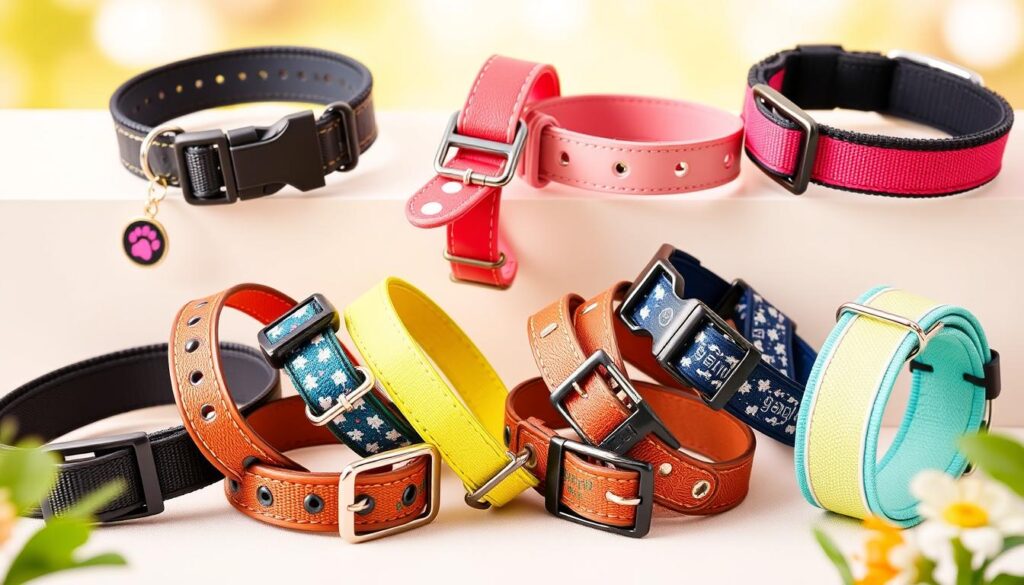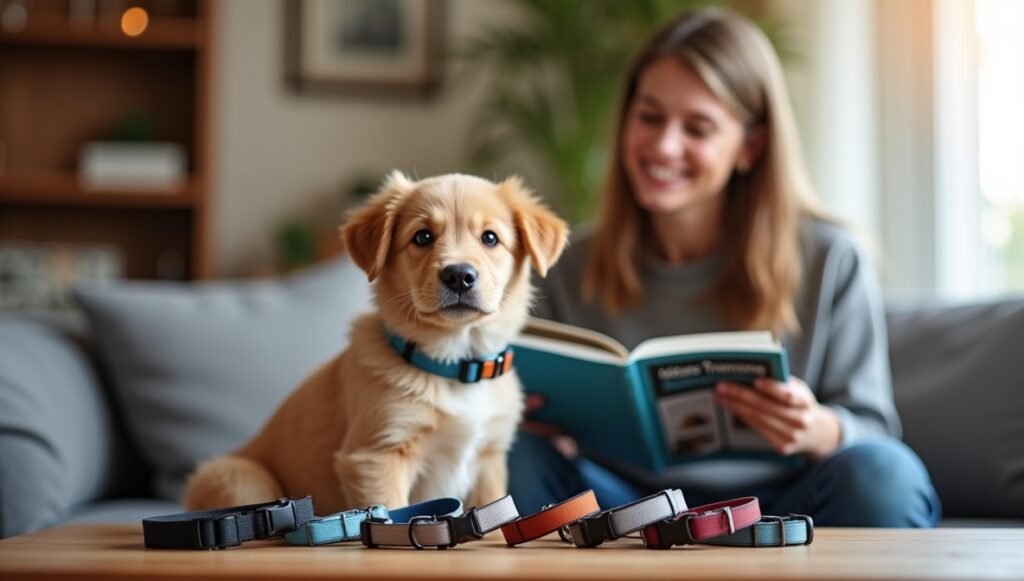Introduction
Bringing a new puppy into your home is an exciting experience, but training can be a challenging task. One tool that many pet owners consider is the training collar. With various options available, choosing the right one for your pup can be overwhelming. This guide will break down different types of training collars, their uses, and how to use them effectively and humanely.
Understanding Puppy Training Collars

Training collars are designed to aid in teaching obedience and correcting unwanted behaviors. It is important to choose a collar that aligns with your training philosophy and your puppy’s temperament.
1. Flat Collars
- Standard collars made from nylon or leather.
- Used for ID tags and leash attachment.
- Best for well-behaved dogs and basic training.
2. Martingale Collars
- Designed for dogs that tend to slip out of traditional collars.
- Provides gentle correction without choking.
- Ideal for breeds with slim necks like Greyhounds.
3. Prong (Pinch) Collars
- Consist of metal links with blunted prongs.
- Used for strong-willed dogs needing firm correction.
- Should be used under the guidance of a professional trainer.
4. Head Collars (Gentle Leaders)
- Wrap around the dog’s muzzle and neck.
- Provide control over the dog’s head movement.
- Effective for pulling behavior and leash training.
5. Electronic (E-Collars)
- Deliver vibration, sound, or mild stimulation for correction.
- Often used for off-leash training and recall commands.
- Must be used responsibly to avoid negative effects.
How to Choose the Right Collar
When selecting a training collar, consider:
- Your Dog’s Size & Breed: Some collars work better for specific breeds.
- Training Goals: Leash training, obedience, or behavior correction?
- Comfort & Fit: Ensure the collar fits well and does not cause discomfort.
- Trainer Guidance: Seek professional advice for more advanced collars.
Proper and Humane Usage
- Always introduce a new collar gradually.
- Avoid excessive force or punishment.
- Pair training collars with positive reinforcement techniques.
- Monitor your puppy’s reaction and adjust accordingly.
Conclusion
Training collars can be valuable tools when used correctly. Understanding the different types and their appropriate applications ensures a safe and effective training experience. Always prioritize your puppy’s well-being and use positive reinforcement alongside any training tool for the best results.




